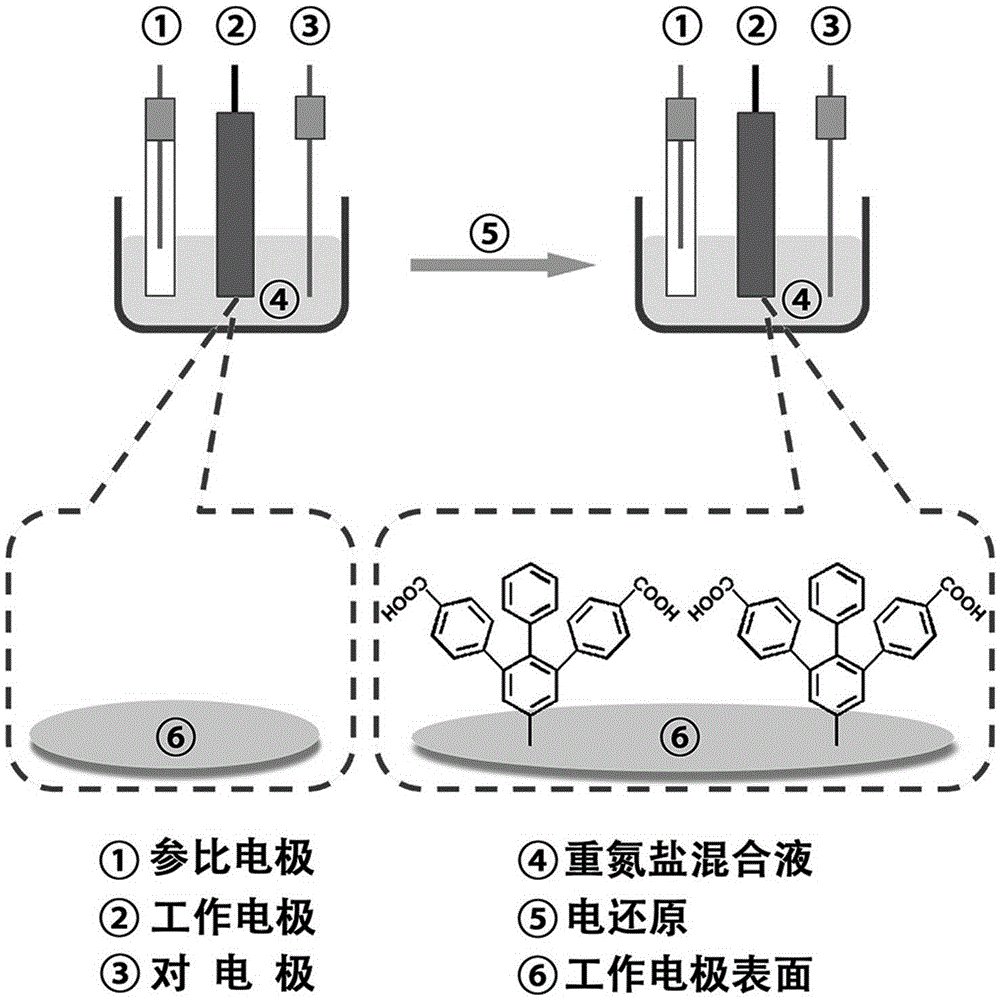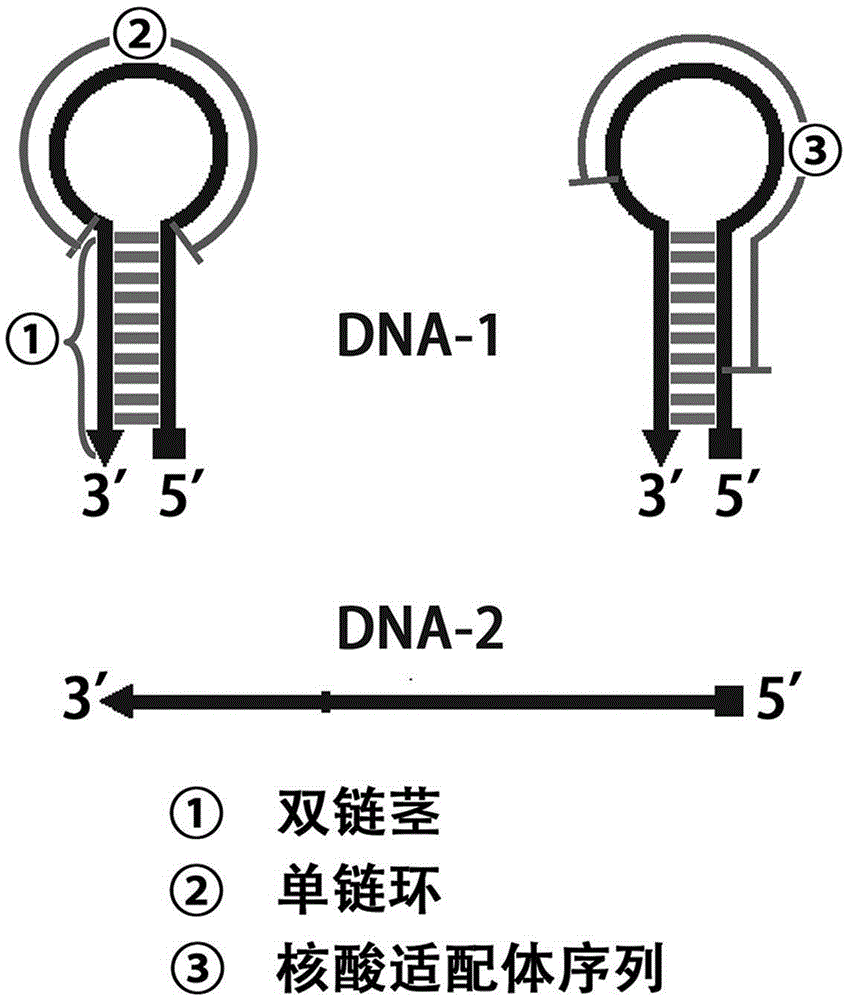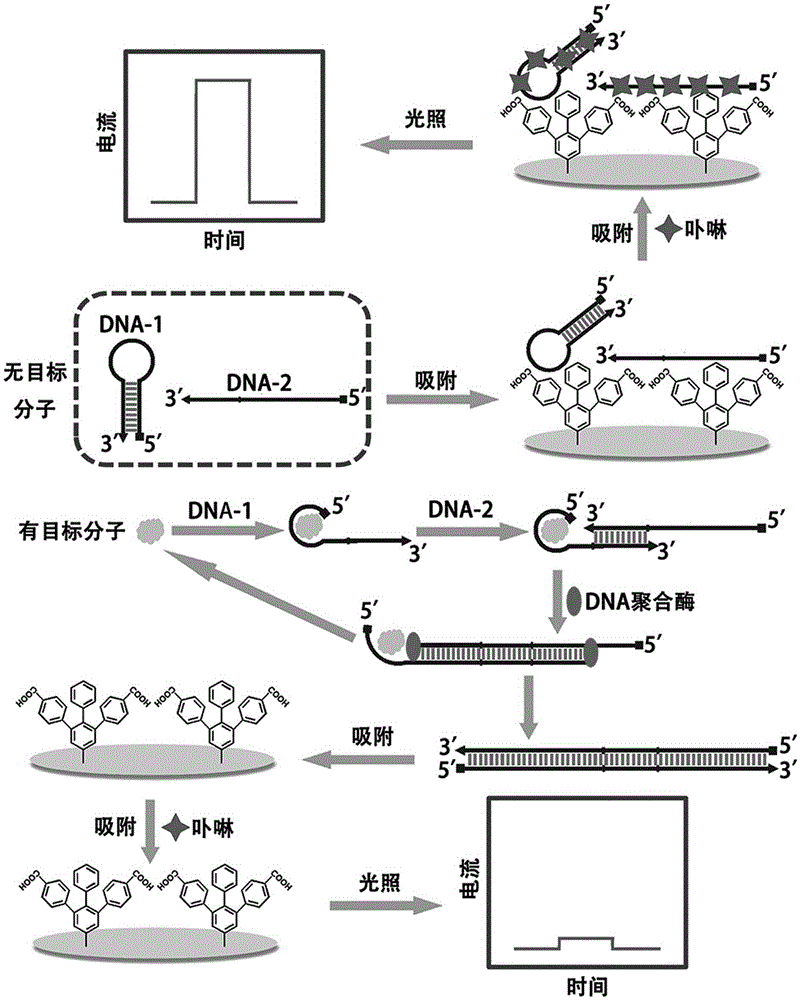Preparation of fixation-free biological sensing electrode and application of fixation-free biological sensing electrode to label-free homogeneous photo-electrochemical pesticide residue detection and cancer diagnosis
A biosensing, fixation-free technology, applied in measuring devices, scientific instruments, and material analysis through electromagnetic means, can solve problems such as complexity, high cost, and high reagent cost, and achieve simple operation, high stability, and high sensitivity Effect
- Summary
- Abstract
- Description
- Claims
- Application Information
AI Technical Summary
Problems solved by technology
Method used
Image
Examples
Embodiment 1
[0042] Example 1. Preparation of immobilization-free biosensing electrode and label-free homogeneous photoelectrochemical sensor for detection of pesticide acetamiprid residues
[0043] (1) Preparation of diazonium salt mixture: mix 3mM p-carboxyaniline and 6mM 4-aminobiphenyl and dissolve in an anaerobic aqueous solution containing 0.3M HCl; Sodium nitrate anaerobic aqueous solution was dripped into the above solution at a speed of 0.5mL / min, and reacted for 50min to obtain a diazonium salt mixture, and the stirring speed was 3000r / min.
[0044] (2) Preparation of non-fixation biosensing electrodes: the glassy carbon electrodes were sequentially made of Al with a particle size of 1.0, 0.3 and 0.05 microns 2 o 3 After the polishing powder is polished, fully rinse with ultrapure water and blow dry with nitrogen; immerse the treated glassy carbon electrode in the above-mentioned diazonium salt mixture for two consecutive cyclic voltammetry scans, and the scan voltage is from 0....
Embodiment 2
[0049] Example 2. Preparation of immobilization-free biosensing electrodes and label-free homogeneous photoelectrochemical sensor for the detection of prostate-specific antigen (PSA)
[0050] (1) Preparation of diazonium salt mixture: mix 4mM p-sulfonate aniline and 12mM aniline and dissolve in an anaerobic aqueous solution containing 0.5M HCl; An oxygen-free aqueous solution was dripped into the above solution at a speed of 0.3 mL / min, and reacted for 40 min to obtain a diazonium salt mixture, and the stirring speed was 1000 r / min.
[0051] (2) Preparation of non-fixation biosensing electrode: soak the ITO electrode in 7mol / L NaOH solution for 5 hours, rinse it with ultrapure water and dry it with nitrogen; immerse the treated ITO electrode in the above-mentioned diazo Two consecutive cyclic voltammetry scans were carried out in the salt mixture, the scan voltage was from 0.4V to -0.3V, and the scan speed was 100mV / s. After scanning, the electrode was taken out, ultrasonical...
PUM
| Property | Measurement | Unit |
|---|---|---|
| particle diameter | aaaaa | aaaaa |
Abstract
Description
Claims
Application Information
 Login to View More
Login to View More - R&D Engineer
- R&D Manager
- IP Professional
- Industry Leading Data Capabilities
- Powerful AI technology
- Patent DNA Extraction
Browse by: Latest US Patents, China's latest patents, Technical Efficacy Thesaurus, Application Domain, Technology Topic, Popular Technical Reports.
© 2024 PatSnap. All rights reserved.Legal|Privacy policy|Modern Slavery Act Transparency Statement|Sitemap|About US| Contact US: help@patsnap.com










